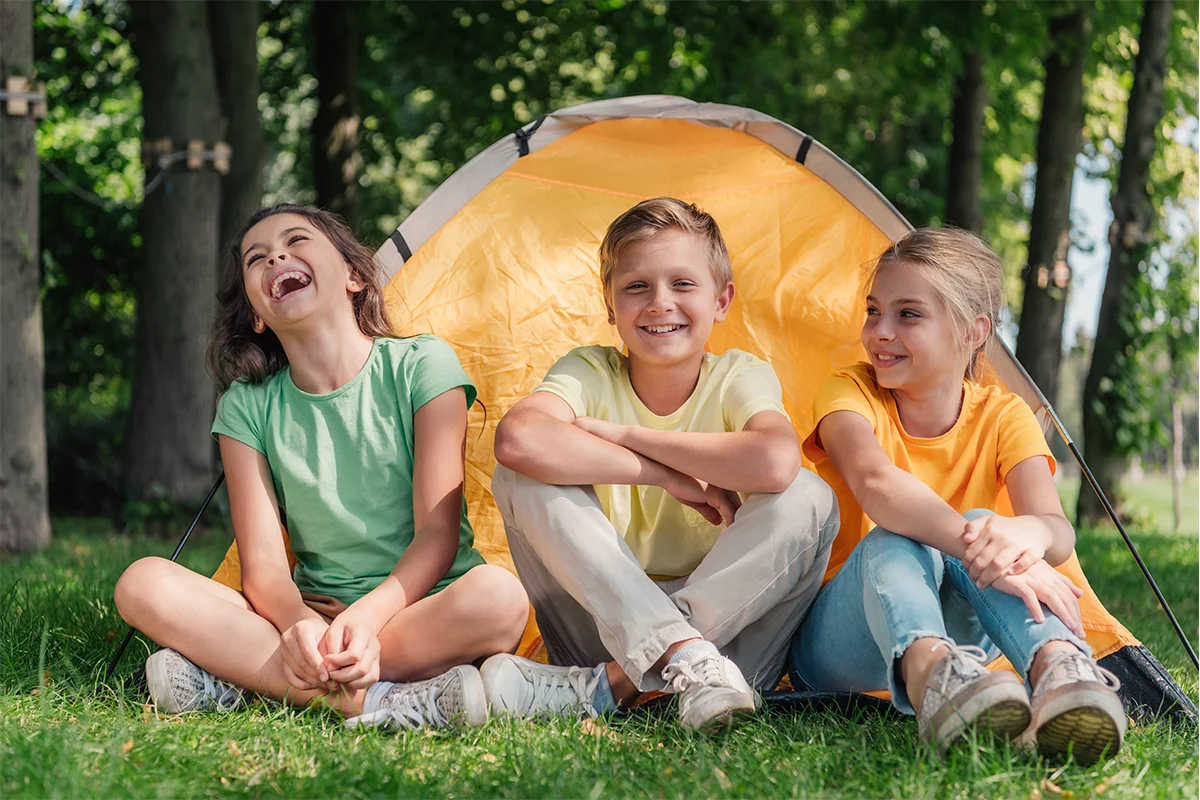Camping in nature with children is a great opportunity to strengthen family bonds and create unforgettable memories. However, camping with kids requires special preparation since the primary goal for parents is to ensure safety and comfort for everyone. Proper planning will help avoid mishaps and make the trip an adventure. In this article, Baltimore Chronicle’ll discuss in detail how to organize safe camping for children, what to consider during preparation, and what to pay attention to on-site.
Choosing a Safe Camping Location
The first and most important step is selecting a safe camping spot. A secure location is key to a peaceful getaway without unnecessary risks.
What to look for when choosing a location:
- Distance from dangerous bodies of water and steep slopes
- Presence of shaded areas for protection from the sun
- Proximity to a clean water source
- Absence of wild animals nearby
- Ease of access by car
Tip: Choose official camping sites that have necessary infrastructure and security.
Preparing and Creating an Essential Gear Checklist
For a successful camping trip, you need to pack carefully, considering the weather, children’s age, and the trip duration.
Essential gear for camping with kids:
- A reliable tent with rain and wind protection
- Sleeping bags suitable for the temperature
- Sleeping pads or inflatable mattresses
- A first aid kit with basic medications
- Insect repellent
- Sunscreen
- Flashlights and spare batteries
- Clothing and footwear for various weather conditions
- Food, water, and cooking utensils
Table for easy reference:
| Category | Examples of items |
|---|---|
| Gear | Tent, sleeping pads, sleeping bags |
| Safety | First aid kit, repellents, sunscreen |
| Food and water | Containers, bottles, thermoses |
| Clothing | Windbreakers, raincoats, hats |
| Lighting | Flashlights, spare lamps |
Organizing the Camp’s Daily Life
A well-organized daily routine ensures comfort and minimizes risks for children.
Key aspects of organizing camp life:
- Set up tents on a flat, stone- and branch-free surface
- Arrange a safe spot for the campfire at a distance from tents
- Store food in an area protected from animals
- Define personal hygiene zones
- Create a play area for kids
Tip: Involve children in the camp setup; this will teach them independence and responsibility.
Safety Rules for Children During Camping
One of the main aspects of safe camping is following proper behavior guidelines in the wild.
Basic safety rules:
- Always keep children in sight
- Teach children not to approach the campfire without permission
- Discuss how to behave when encountering wild animals
- Teach children not to touch unfamiliar plants
- Ensure that they wear hats and stay hydrated
How to Entertain Children During Camping
Organized activities help prevent boredom and keep the kids under control.
Activity ideas:
- Hiking and scavenger hunts
- Bird and insect watching
- Nature drawing
- Storytelling by the campfire
- Outdoor sports games
Tip: Prepare a few simple games that don’t require special equipment.
What to Do in an Emergency Situation
Even with the best preparation, unexpected situations can arise. It’s crucial to know how to act in case of an emergency.
Actions in emergency situations:
- Always have a first aid kit nearby
- Know the location of the nearest medical facility
- Teach children basic first aid
- Set clear rules for gathering in case of evacuation
- Keep a charged mobile phone for emergency calls
Organizing safe camping for children requires thorough preparation, attention to detail, and readiness to respond to any situation. Choosing the right location, packing essential gear, establishing behavior rules, and planning fun activities will make your outdoor adventure memorable and safe for the whole family.
Earlier we wrote about how to organize active outdoor recreation for children.

